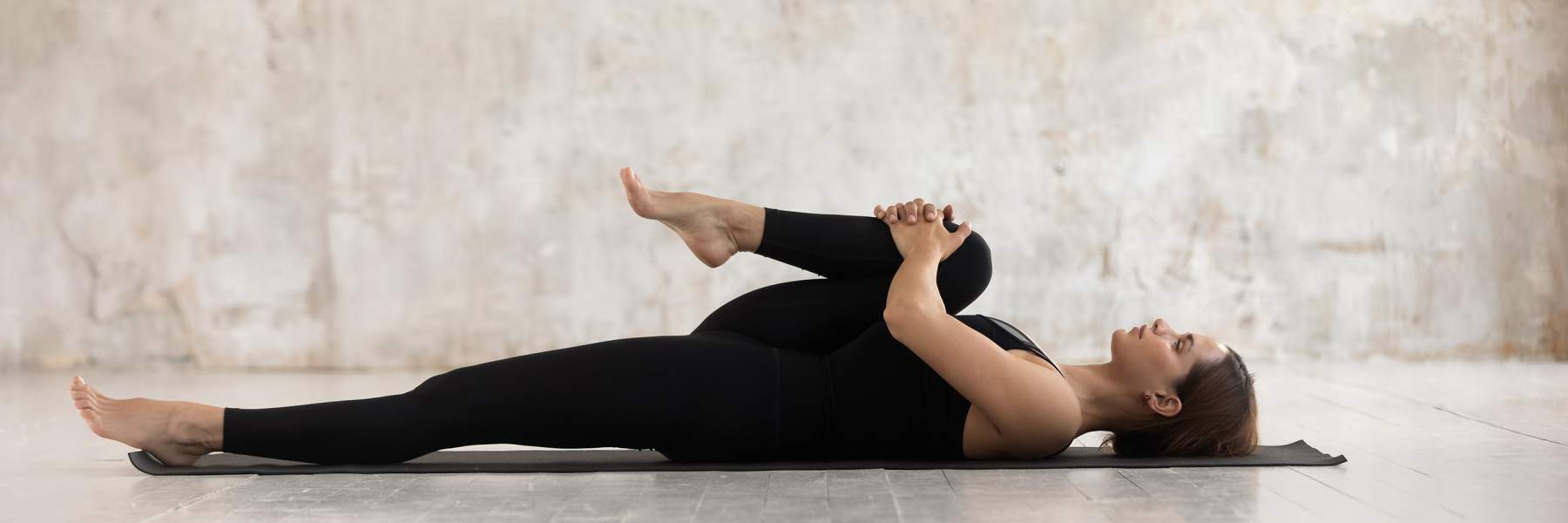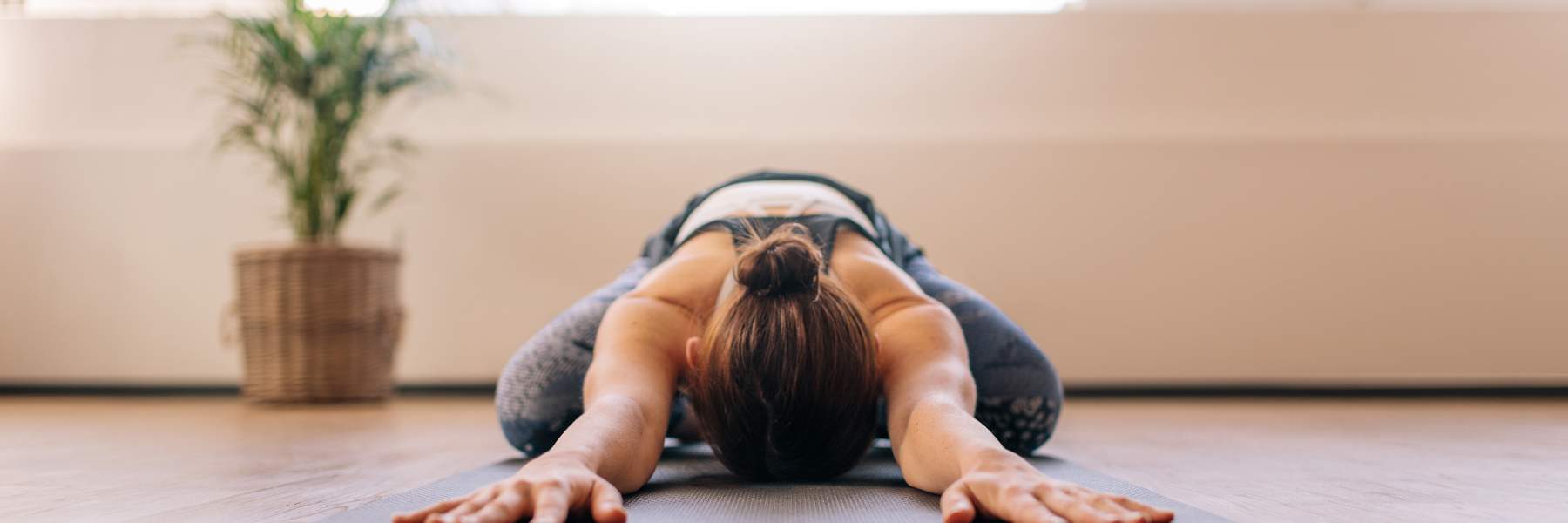Stretches can be a fantastic way to self-manage some of your symptoms and improve your quality of life.
Stretches that target the muscles of the pelvic region, low back and/or lower limbs can be very helpful in managing pelvic pain. Stretches can help improve muscle length, improve nerve function, and even provide some time for relaxation.
Step 1: Dress in clothes that are comfortable for doing stretches
It is important to ensure you are wearing clothes that will be comfortable for doing stretches. Some people find that tight exercise leggings are not comfortable over their external genitalia, over their bladder, and/or over their lower abdomen. Wear something that feels good for you – everyone is different.
Step 2: Find a space that is appropriate for you to do stretches
Set-up your space so that you have sufficient room to be able to stretch comfortably. If you have a mat for the floor, set that up, and provide yourself with a few pillows to make yourself as comfortable as possible. Turn your phone to silent and ensure that you won’t be interrupted by anyone, or anything, for several minutes.

Step 3: Choose the stretches you are going to try
Some stretches will feel great for some people and not so good for others. Everyone is different. Initially, try 1 or 2 different types of stretches each day. See how they feel as you do them, and how you feel over the 24 hours following the stretches. If they feel good, keep doing them. If you do not like them, are not sure how to do them correctly, and/or they feel uncomfortable, leave them out of your routine and seek the advice of an appropriate pelvic health physiotherapist. The goal is to build a repertoire of stretches that you enjoy doing, that feel comfortable and relaxing, and where you feel a stretch in the muscle or nerve. When you find a stretch you enjoy, hold it for 20-30 seconds, and do it 2-3 times. And while stretching, don’t forget to breathe! The video below shows some stretches you might like to try.
Step 4: Reflection
When you first start doing stretches for your pelvic pain, it can be helpful to write some notes about which stretches you do each day and how you feel afterwards. You can keep a diary recording how comfortable you feel, perhaps scoring a number out of 10 (0 = not comfortable at all, 10 = feeling really comfortable).
Step 5: Over time build your own unique, personalised stretching routine
Over several days or weeks, try many different stretches, slowly building up your repertoire of exercises. You may start with two stretches, then four, then six etc. You are slowly building up your body’s tolerance to movement, helping to keep your muscles at an ideal length, the nervous system moving and stretching as needed, as well as having some relaxing ‘you’ time. This can be a repertoire you do daily to self-manage some of your symptoms and to improve your quality of life.

 Skip to main content
Skip to main content